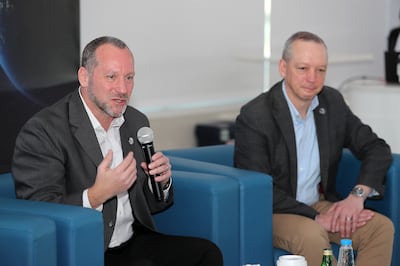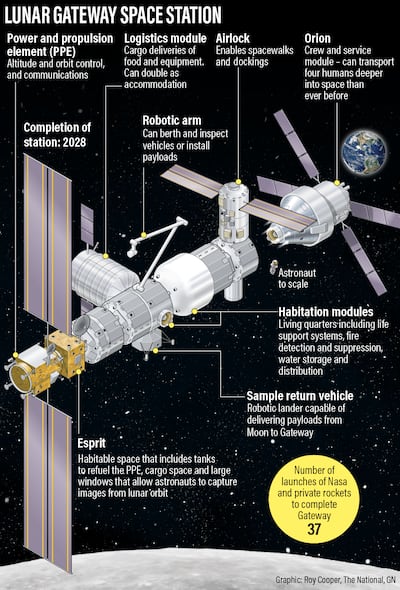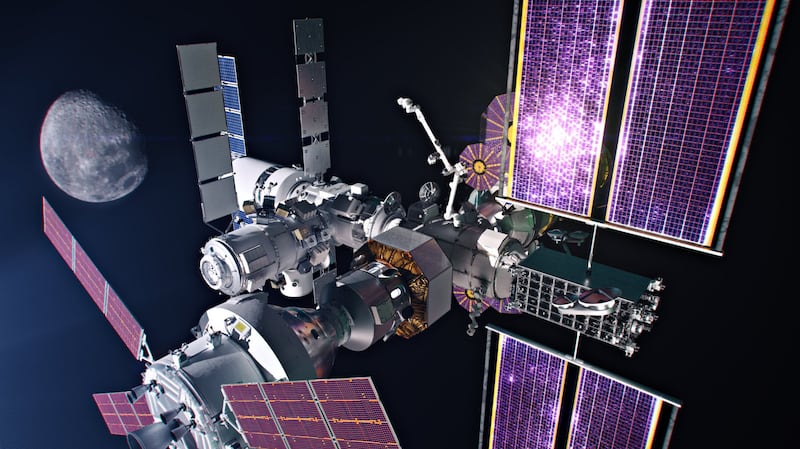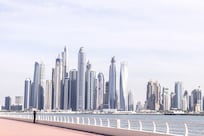Nasa is working with the Mohammed bin Rashid Space Centre to help integrate autonomous features into the design of an airlock that the UAE is contributing to the Lunar Gateway, a Moon-orbiting station.
The US space agency wants the entire Moon orbiting station to be autonomous because astronauts will be present for only one month a year and the structure needs to be maintained.
A Nasa delegation is visiting the MBRSC in Dubai this week to discuss features of the airlock, used to enter and exit the station, which is expected to be launched at the end of this decade.
Officials from Nasa also participated in a panel session focused on the project at the Sharjah Academy of Astronomy, Space Sciences and Technology on Thursday.

Dr Jon Olansen, programme manager of the Gateway, said autonomous control capability for the entire station was being created in Houston, Texas.
"We're going to have a crew there for 30 days a year or so – the rest of the time that station needs to operate and you can choose to have operations controlled on the ground or we can have the station operate itself," he said.
"We are actually building-in the ability to evolve our autonomous capabilities for that station, so that's technology that will actually flow together with all of the different elements.
"We will be working with UAE and MBRSC in their software development of the airlock."
Humans have been continuously present on board the International Space Station (ISS) since it began operations more than 20 years ago.
Astronauts help to maintain the structure, help arriving crew to enter the floating laboratory and use the station's robotic arm to receive cargo.
But with ageing infrastructure and the ISS nearing retirement, Nasa is looking to send humans to the Moon, then eventually to Mars, as part of the Artemis programme.

The station also requires autonomous features so Nasa can continue directing scientific tests, environmental monitoring and support for live biological samples.
"We will need that type of capability to actually execute transit to Mars," Dr Olansen said.
He said his team was looking to adopt "cutting-edge technology, advancing it and using Gateway in a similar way that we use the ISS to advanced technologies that enabled us to do Gateway today".
The Nasa delegation's visit to the UAE comes less than three weeks after an agreement for the Emirates to supply a crew and science airlock for the Gateway.
In exchange, an Emirati astronaut will fly to the station, becoming the first Arab to orbit the Moon.
Discussions between Nasa and the MBRSC will touch on safety elements of the airlock.
"How do you improve your pressure control systems?" said Dr Olansen. "Or your carbon dioxide removal systems? What levels of oxygen can you be at? What exercise capabilities do you need to provide?
"All of these are things need to be factored into the initial design of the spacecraft we build.
"So, these are the conversations we started this week with MBRSC, as they're looking at design and development of an airlock.
"These humans are going to be in that airlock in their spacesuits, understanding all the different functionalities you need, what you need to do if something goes wrong and how you get those crews back in safely."
The MBRSC is going to be working with international and UAE companies to develop the airlock.







